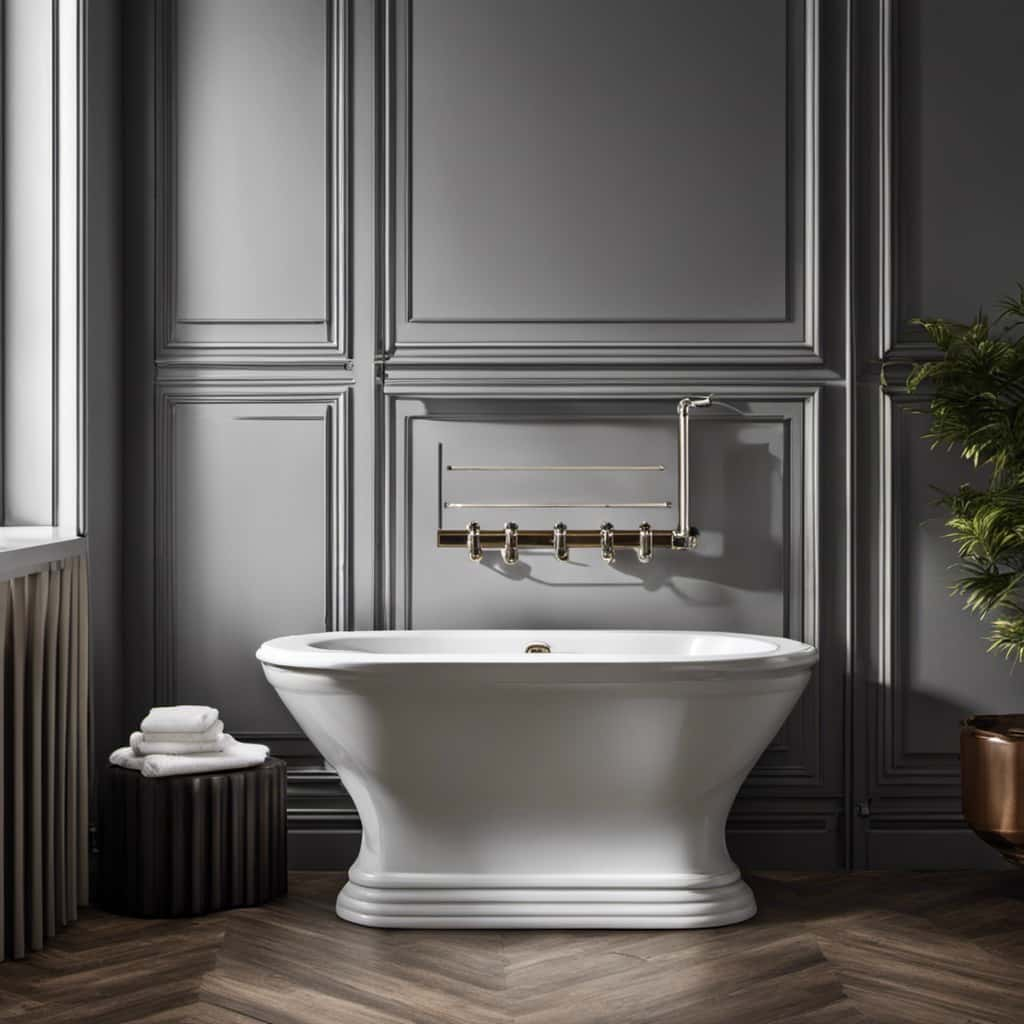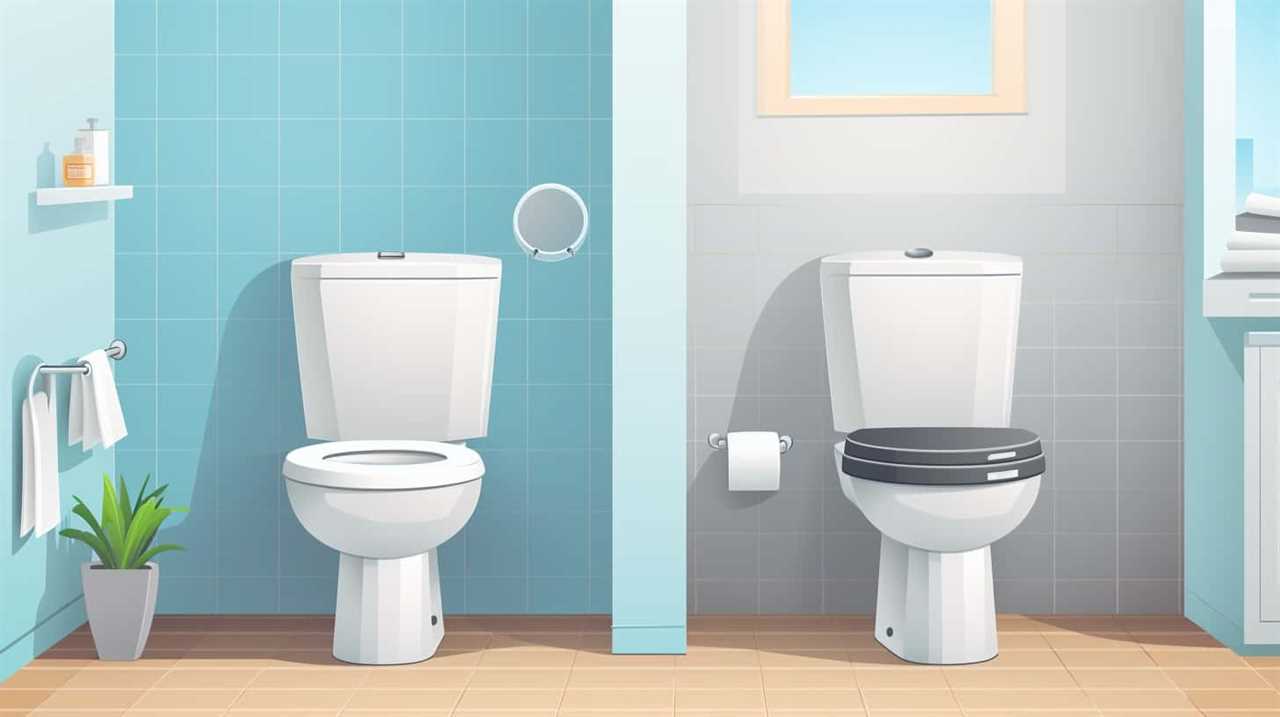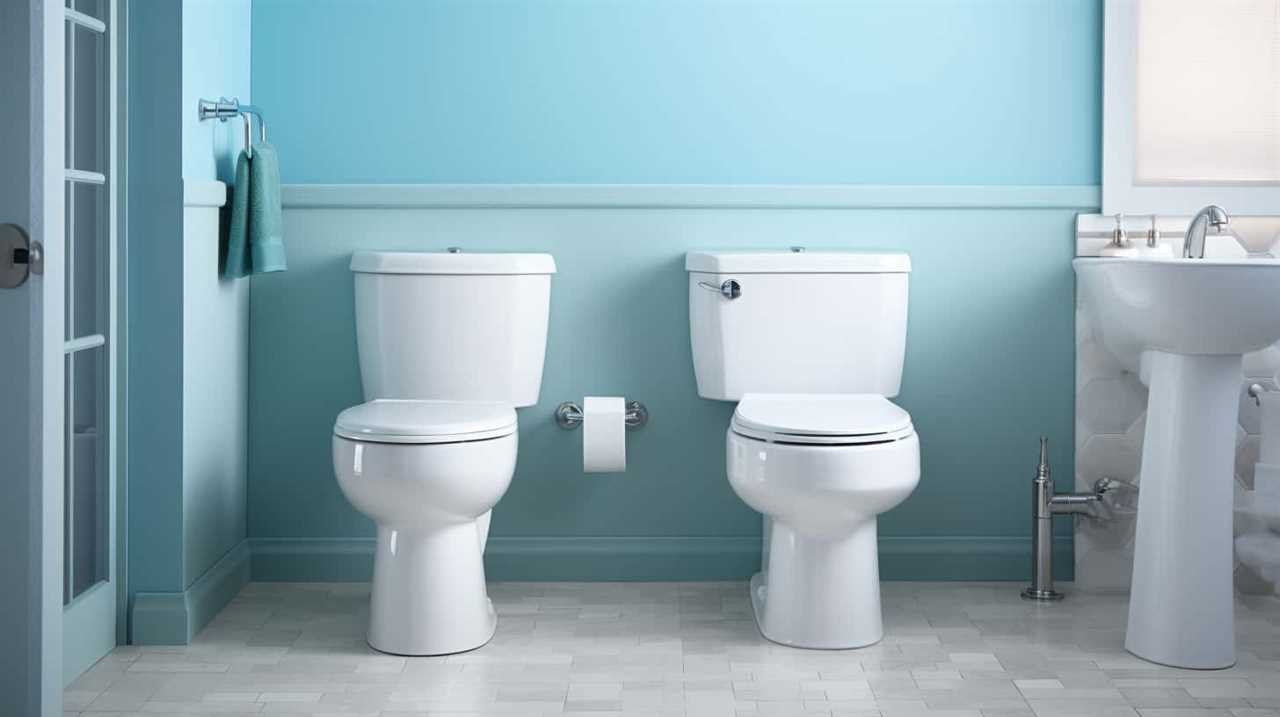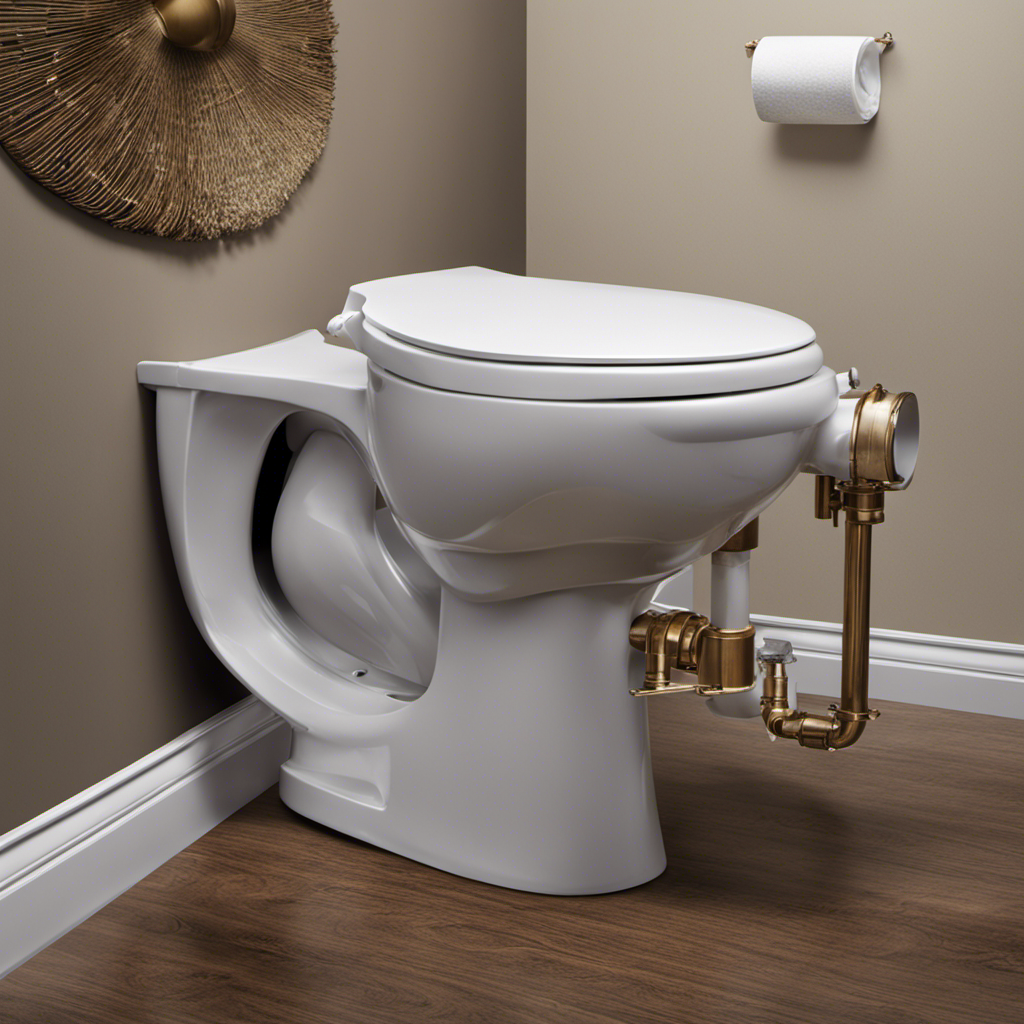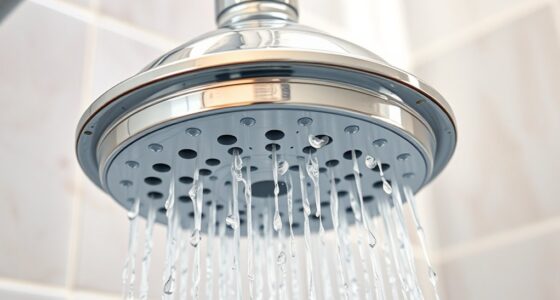We’ve all encountered it – the intimidating job of putting in a new toilet. But don’t worry, we’re here to help you navigate through the process!
In this article, we’ll break down exactly what materials you’ll need to successfully complete the job. From the essential wax ring and water supply line to the necessary tools, we’ve got you covered.
So, let’s dive in and ensure you have everything you need to conquer this DIY project with confidence.
Key Takeaways
- Toilet materials include toilet bowl, toilet tank, plumbing pipes, flush mechanism, seat and lid.
- Different types of toilets include gravity-fed toilets, pressure-assisted toilets, dual-flush toilets, and composting toilets.
- Consider water efficiency, flushing power, and ease of maintenance when choosing toilet materials.
- Essential tools for toilet installation include adjustable wrench, pipe wrench, plunger, and screwdriver.
Toilet
Toilets require specific materials to function properly and efficiently. The toilet installation process involves the use of various components such as a toilet bowl, tank, seat, wax ring, and water supply line. These materials are essential for the proper functioning of the toilet system.
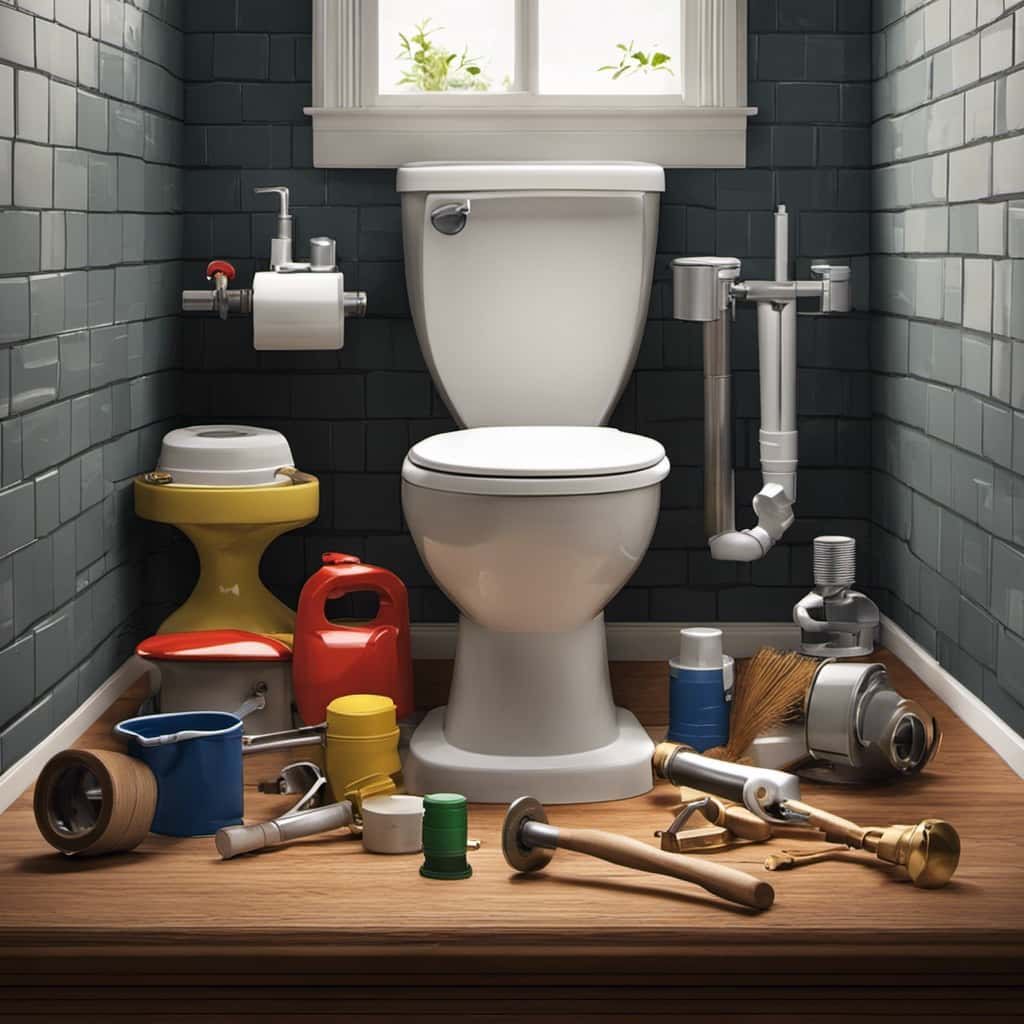
When it comes to the different types of toilets available in the market, there are several options to choose from. These include gravity-fed toilets, pressure-assisted toilets, dual-flush toilets, and composting toilets. Each type has its own unique features and benefits, catering to different needs and preferences.
It’s important to consider factors like water efficiency, flushing power, and ease of maintenance when selecting a toilet for your space. By understanding the materials required and the different types available, you can make an informed decision for your toilet installation project.
Wax Ring
For the installation of a toilet, one of the essential materials required is a wax ring. The wax ring is a crucial component that creates a watertight seal between the toilet base and the flange on the floor. Proper wax ring placement is vital to prevent leaks and ensure a secure installation.
Here are four key points to consider when installing a wax ring:
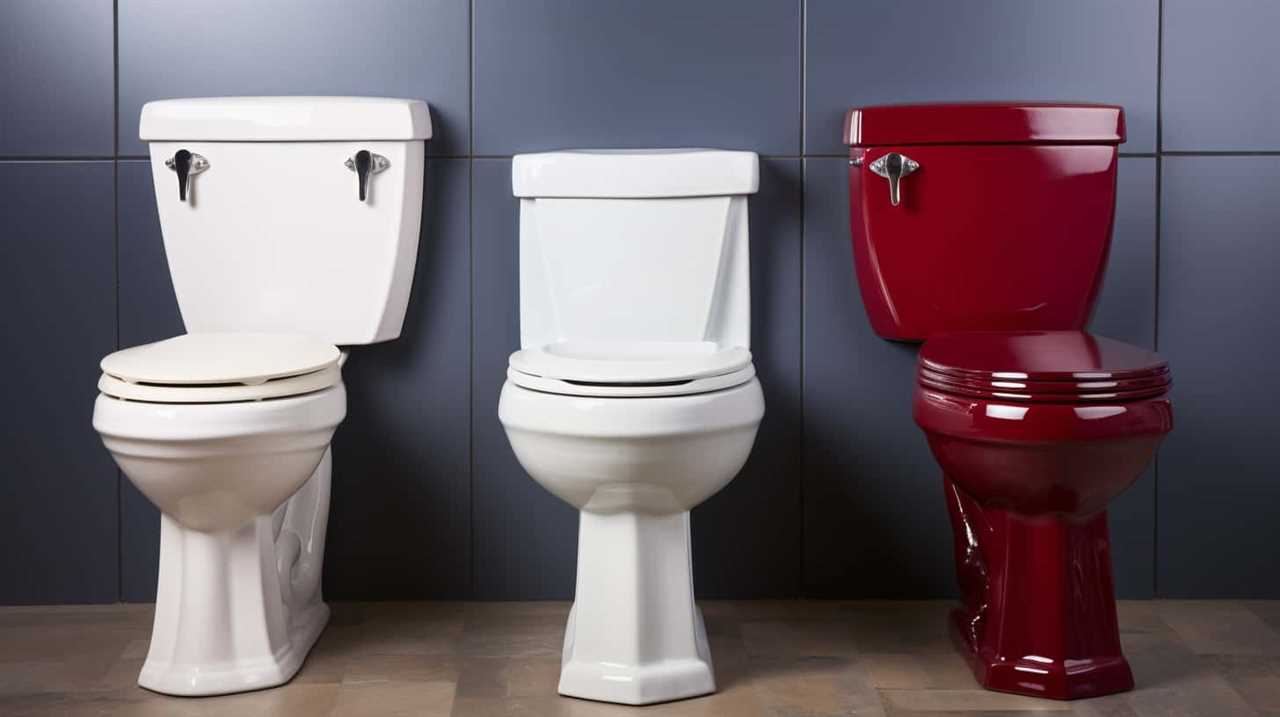
- Size: Select a wax ring that matches the size of your toilet flange to ensure a proper fit.
- Positioning: Place the wax ring centered on the flange, ensuring it covers the entire opening.
- Compression: When lowering the toilet onto the wax ring, apply even pressure to compress it and create a tight seal.
- Alignment: Ensure the toilet is properly aligned with the flange before tightening the bolts to avoid damaging the wax ring.
Water Supply Line
After installing the wax ring, we need to connect the water supply line to the toilet. The water supply line is an essential component of the plumbing installation, ensuring a steady flow of water to the toilet tank. It is crucial to properly connect and troubleshoot any water supply issues to avoid leaks or other problems.
To help you understand the importance of the water supply line, here is a table outlining the key components:
| Component | Description | Function |
|---|---|---|
| Water Supply Valve | Controls water flow to the toilet | Allows for easy shut-off in case of emergencies |
| Fill Valve | Regulates water level in the tank | Ensures proper functioning of the flush mechanism |
| Flexible Hose | Connects the water supply valve to the toilet tank | Allows for flexibility in installation and maintenance |
When troubleshooting water supply issues, make sure to check for any leaks or blockages in the supply line, ensure the water supply valve is fully open, and inspect the fill valve for any malfunctions. Properly maintaining and troubleshooting the water supply line will help maintain a functional and efficient toilet system.
Tools
Once we’ve connected the water supply line to the toilet, we can move on to discussing the tools needed for the installation. When it comes to toilet installation or repair, having the right tools is essential for a successful outcome.
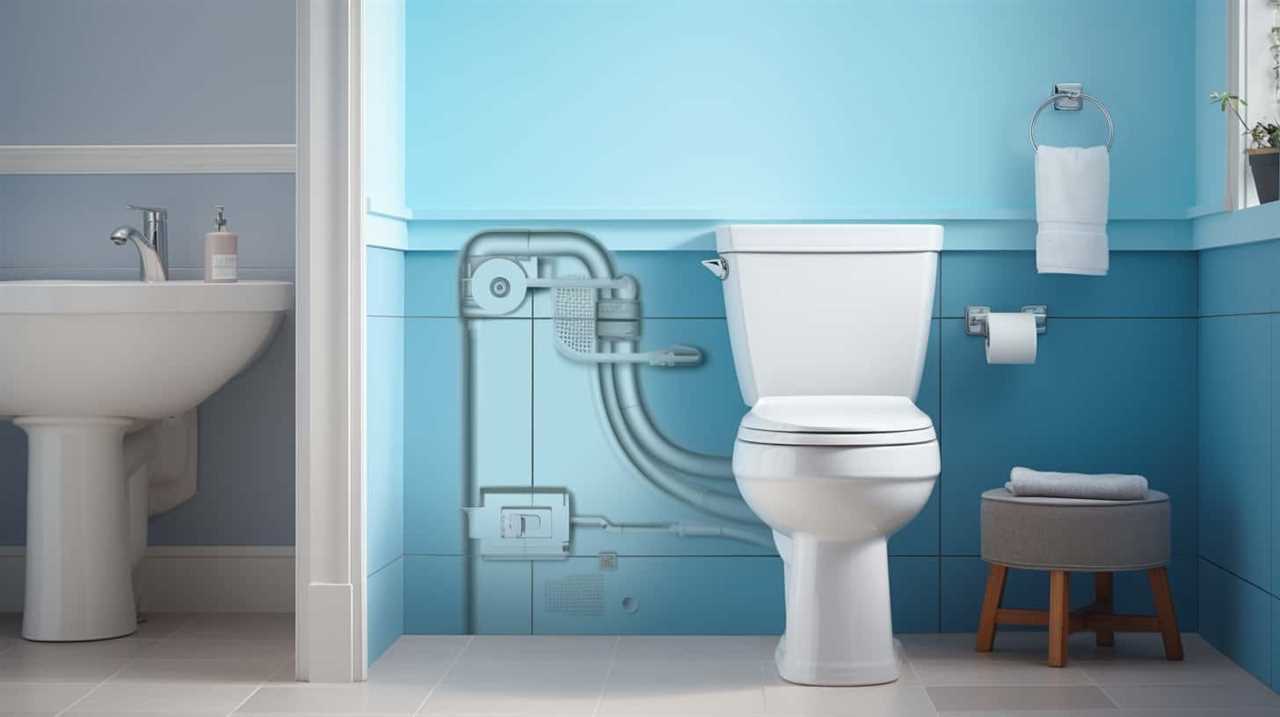
Here are four tools that are commonly used in toilet installation and repair:
- Adjustable wrench: This tool is used to tighten or loosen nuts and bolts, making it indispensable for connecting the water supply line to the toilet.
- Pipe wrench: A pipe wrench is necessary for tightening or loosening pipes and fittings. It provides a firm grip and allows for precise adjustments during the installation process.
- Plunger: Although commonly associated with unclogging toilets, a plunger can also be used during installation to create a seal and ensure proper flushing.
- Screwdriver: A screwdriver is needed for removing or installing screws that hold the toilet seat or cover in place.
With these essential tools, you’ll be well-equipped to handle any toilet installation or repair task.
Now, let’s move on to discussing the other necessary materials for the job.
Other Necessary Materials
Now that we’ve covered the tools needed for toilet installation and repair, let’s explore what other necessary materials are required for the job.
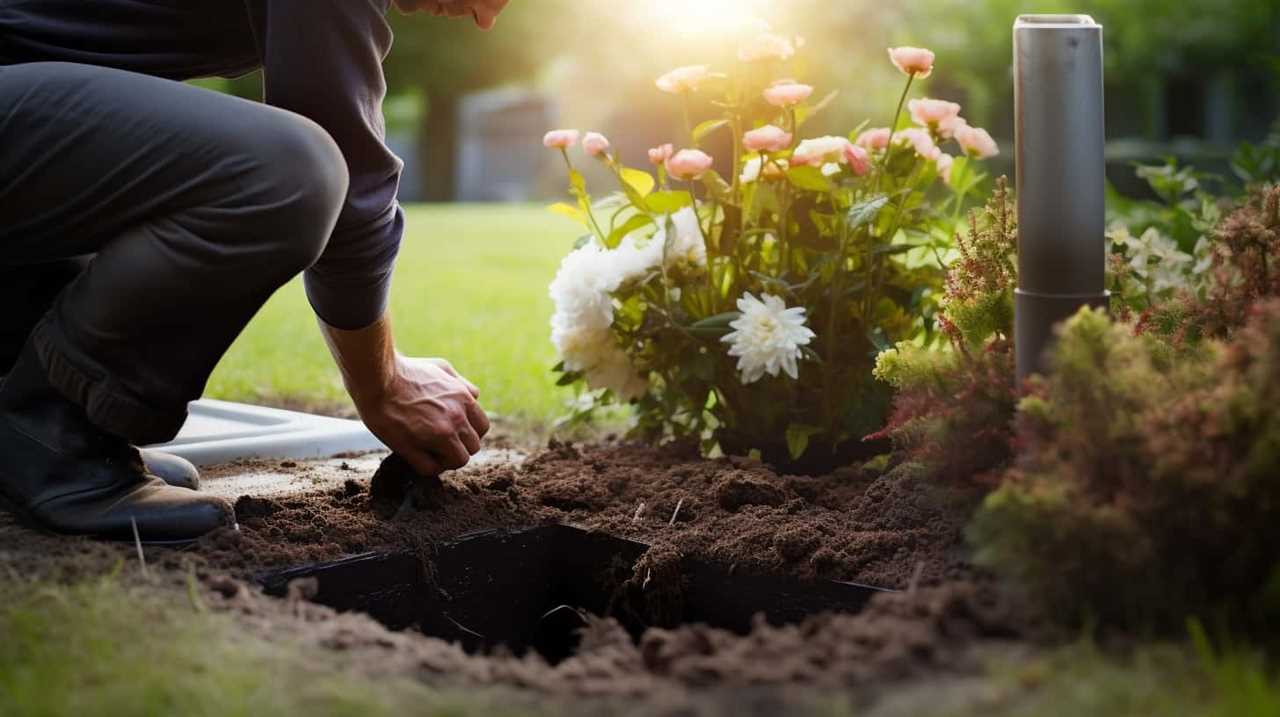
Two important items to consider are the toilet seat and the toilet paper holder.
The toilet seat provides comfort and support while using the toilet, and it’s available in various materials such as plastic, wood, or cushioned options. When choosing a toilet seat, it’s important to consider durability, ease of cleaning, and compatibility with your toilet model.
The toilet paper holder is essential for conveniently storing and accessing toilet paper. It can be mounted on the wall or attached to the toilet tank. Consider factors like size, design, and ease of use when selecting a toilet paper holder.
These additional materials ensure a comfortable and functional toilet experience.
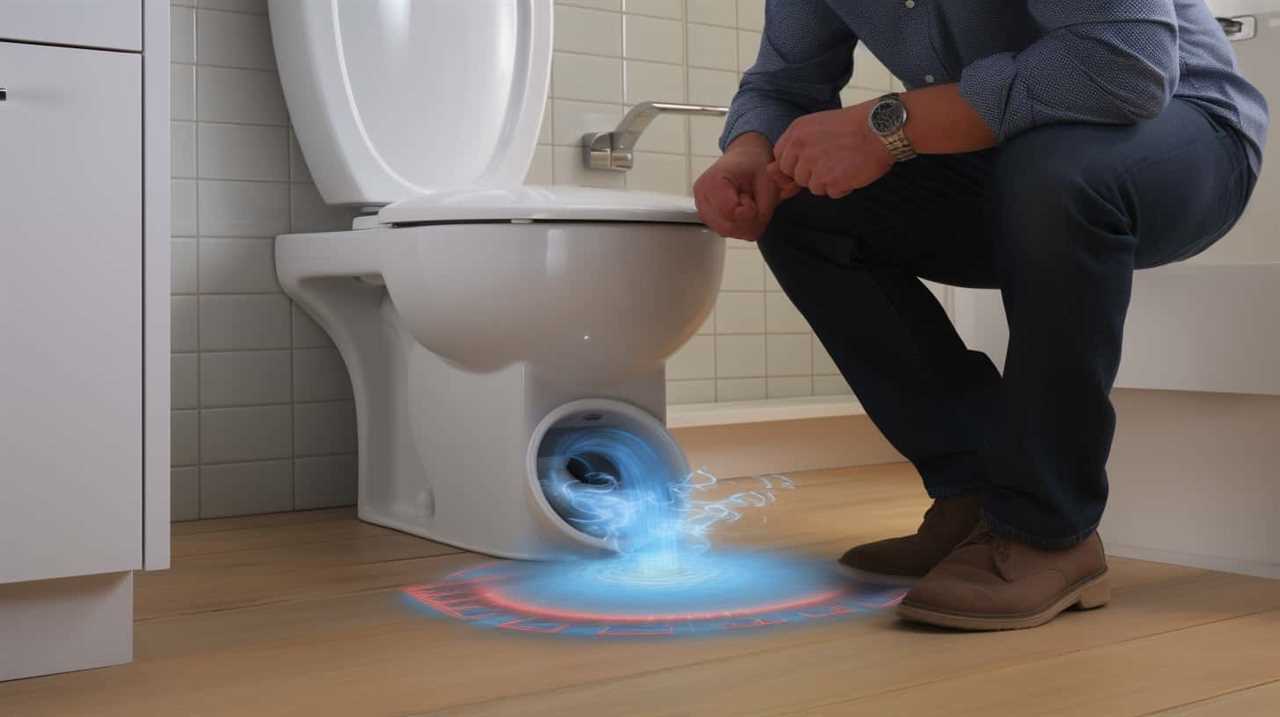
Frequently Asked Questions
How Do I Choose the Right Size and Type of Toilet for My Bathroom?
When choosing a toilet for your bathroom, we consider the toilet size options and different toilet types. It’s important to measure your bathroom space and choose a toilet that fits properly and meets your needs.
Do I Need to Hire a Professional Plumber to Install a Wax Ring?
No, we don’t need to hire a professional plumber to install a wax ring. There are alternative solutions available that allow us to install it ourselves. Proper guidance and instructions can help us do the job efficiently.
Can I Use Any Type of Water Supply Line for My Toilet?
Yes, any type of water supply line can be used for a toilet. However, it is recommended to use a flexible stainless steel braided line for a secure and leak-free toilet water connection.
What Tools Do I Need to Install a Toilet?
To install a toilet, you’ll need a few essential tools. These include a wrench, screwdriver, level, measuring tape, and plunger. Follow the proper installation steps to ensure a secure and functioning toilet.

Are There Any Additional Materials I Should Have on Hand When Installing a Toilet?
When installing a toilet, it’s important to have additional materials on hand, such as wax rings, bolts, and water supply lines. Additionally, don’t forget the toilet seat, which is necessary for comfort and functionality.
Conclusion
In conclusion, when it comes to installing a toilet, it’s essential to have the necessary materials on hand. From the toilet itself to the wax ring and water supply line, each component plays a crucial role in ensuring a functional and efficient bathroom fixture.
By gathering the required tools and other necessary materials, you can confidently tackle this task and create a comfortable and convenient space for your everyday needs.
Remember, a well-equipped bathroom is like a smoothly flowing river, bringing ease and tranquility to your daily routine.
